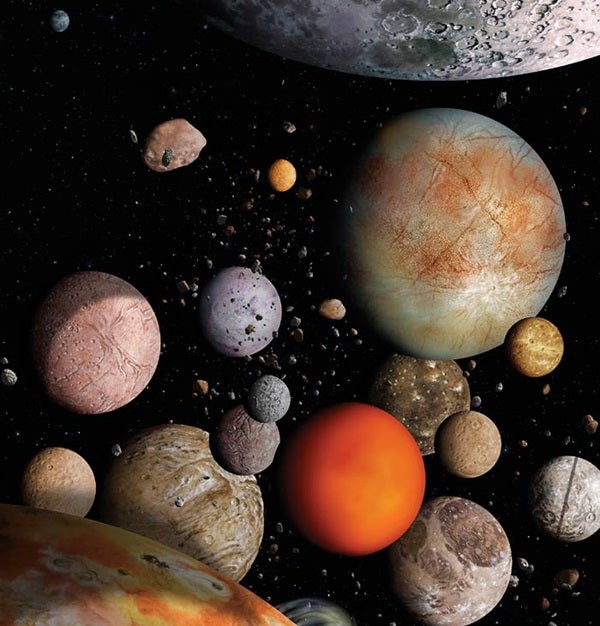Scott Sheppard and David Jewitt of the University of Hawaii, and Jan Kleyna of Cambridge University, England, spotted the moons in images taken December 12, 2004, with the 8.2-meter Subaru telescope on Hawaii’s Mauna Kea. They confirmed the observations during January to March 2005 using the 8-meter Gemini North telescope, also on Mauna Kea.
None of the 12 moons is large. Assuming their surfaces reflect about 4 percent of the sunlight falling on them — typical for such small, irregular satellites — the moons are only 2 to 4 miles (3 to 7 km) across. The discovery nearly doubles the number of known irregular moons; all but one (S/2004 S11) orbit retrograde, in a direction opposite Saturn’s rotation.
But a couple of days later, the moon-count clicked upward again. On May 10, the Cassini imaging team broke the news that on May 1, the spacecraft’s camera had caught sight of a long-suspected moon orbiting in the narrow Keeler Gap, which lies just inside the outer edge of Saturn’s A ring.
The new new moon, designated S/2005 S1, is only about 4 miles (7 km) in diameter. Unlike the outer irregular moons, however, S/2005 S1 reflects about half the light striking it, giving it a brightness similar to nearby ring particles.
Ring scientists were elated to see the moon’s gravity making waves in both edges of the gap, which is about is 25 miles (40 km) wide. S/2005 S1’s wave-making behavior mimics that seen also with Saturn’s moon Pan, whose orbit lies in the 200-mile (320-km) wide Encke Gap, farther into the A ring.
The link at the bottom downloads a PDF file containing a list of all the known moons belonging to the planets, with orbital and physical properties. The table, which is drawn from a web site created by Scott Sheppard, is complete through May 23, 2005, the date of posting.
The satellites are listed by planet, in order of distance outward from the planet. Irregular moons — those with large, highly eccentric, and often highly inclined orbits — are written in red font. The properties given in each column are as follows:
- Mars — companions of the god of war
- Jupiter — the god’s lovers and descendants (retrograde-moon names end in “e”)
- Saturn — larger moons are named for Greco-Roman titans and giants, irregular moons have the names of Gallic, Inuit, or Norse mythical figures
- Uranus — characters from Shakespeare’s plays and Alexander Pope’s mock-epic poem, “The Rape of the Lock”
- Neptune — Greco-Roman figures associated with the sea god
- Pluto — the boatman who ferried dead souls over the river Styx
None of the 13 new moons of Saturn has yet received a name; each bears only its provisional designation. With their discovery, the solar system’s “Moon-O-Meter” stands at 154. Given present research efforts, that number is unlikely to remain for long.










